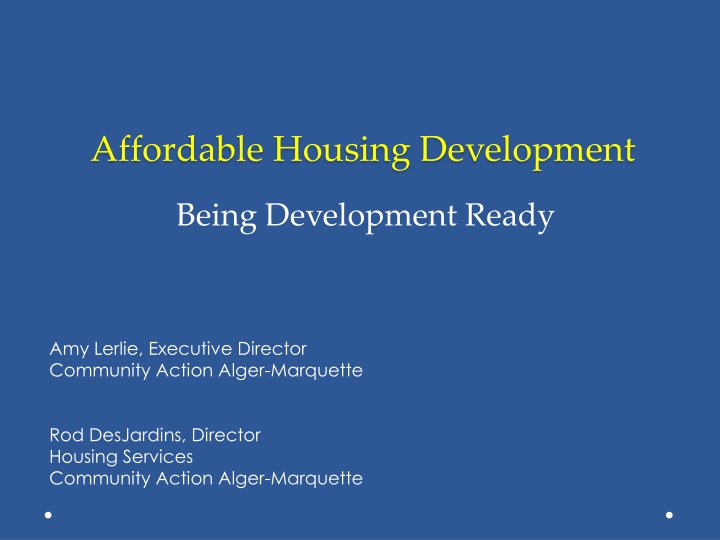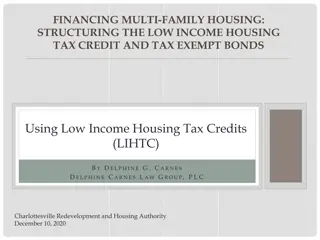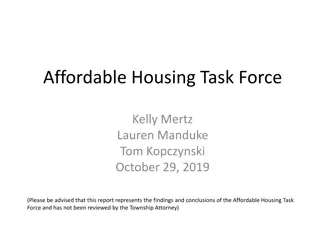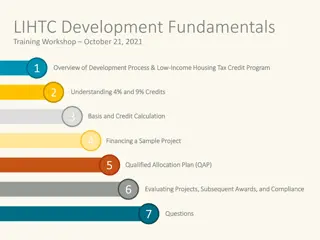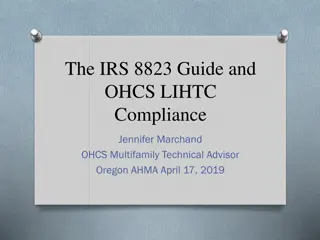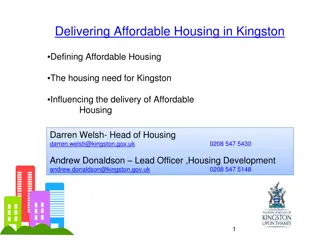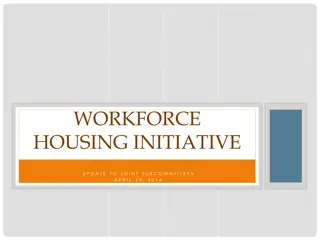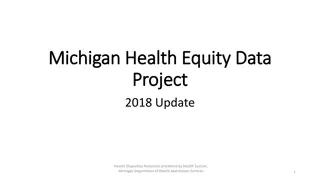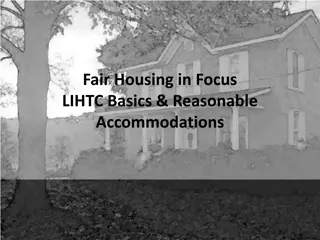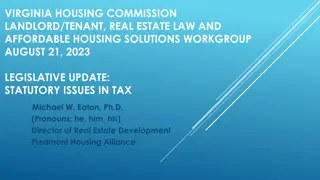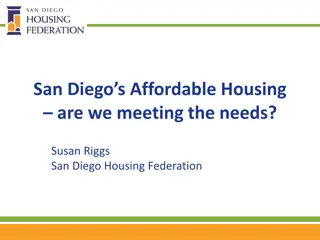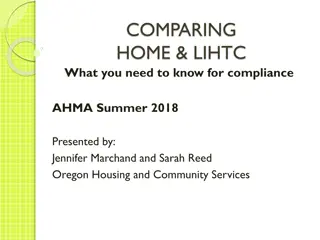Affordable Housing Development in Michigan: Understanding LIHTC and Housing Initiatives
Explore the key aspects of Low-Income Housing Tax Credits (LIHTC) in Michigan administered by MSHDA. Learn about the Qualified Allocation Plan, funding priorities, PSH requirements, and the development process to address homelessness and support affordable housing initiatives.
Download Presentation

Please find below an Image/Link to download the presentation.
The content on the website is provided AS IS for your information and personal use only. It may not be sold, licensed, or shared on other websites without obtaining consent from the author.If you encounter any issues during the download, it is possible that the publisher has removed the file from their server.
You are allowed to download the files provided on this website for personal or commercial use, subject to the condition that they are used lawfully. All files are the property of their respective owners.
The content on the website is provided AS IS for your information and personal use only. It may not be sold, licensed, or shared on other websites without obtaining consent from the author.
E N D
Presentation Transcript
Affordable Housing Development Being Development Ready Amy Lerlie, Executive Director Community Action Alger-Marquette Rod DesJardins, Director Housing Services Community Action Alger-Marquette
Session Objectives 1. Speak LIHTC (lie-tech) 2. How LIHTC Relates to the CoC, HMIS, PBV, Section 811, MOUs 3. Speaking LIHTC to Others Small Groups 4. No Pressure Quiz 5. Question and Answer
Homelessness is the result of the inability to afford and maintain housing. LIHTC addresses affordability and gives preference for support.
What is LIHTC? Internal Revenue Code (IRC) Section 42 (1986) Incentive for Syndicators Looking to Lower Their Income Tax Obligation Results in Affordable Housing
Michigan MSHDA Administers LIHTC Qualified Allocation Plan (QAP) Developers Compete for LIHTC Scoring Based on Categories and Conditions FY17 QAP: http://www.michigan.gov/mshda/0,4641,7-141-5587_5601-31750--,00.html
Qualified Allocation Plan MSHDA will award LIHTCs to different Categories of housing, as well as to meet Statutory Set-Asides (as further defined below) of the state's total credit ceiling. Funding Priorities Preservation Category Permanent Supportive Housing (PSH) Category Open Category Strategic Investment Category Undesignated Percentage 25% 25% 25% 10% 15%
PSH Requirements Minimum 25% Set Aside Addendum III http://www.michigan.gov/documents/mshda/mshda_li_ca_05_addendu m_iii_183854_7.pdf
423 Units Over 20 Years Lost Creek, 1999: 151 Units, Senior Orianna Ridge, 2004: 81 Units, Family o 25% Set Aside with HUD SHP Grant Via CoC Snowberry Heights, 2006: 191 Units, Senior Grandview Marquette, 2015 Mather Court, 2016 Bell Court, 2017
Development Process 1. Site Control 2. Application - HMIS Data - Local Support 3. Award 5. Syndicate - Sell 6. Construct 7. Occupy -Provide Support - Service Collaboration (MOUs) - Market Information
Grandview Marquette 1. HRS Calls MSHDA 2. MSHDA Leads to Us 3. We Partner We Write Addendum III LIHTC s Awarded Under Construction
Grandview Marquette, 2016 56 Units 1, 2 , 3 Bedroom Downtown 50% AMI or Less 5 Service Partners 8 Units PBVs 5 Units Chronically Homeless: ZERO INCOME 6 Units Section 811
Mather Court 40 Units 1, 2, 3 Bedroom Downtown 30/40/60% AMI or Less 7 Service Partners 10 Units PBVs 0 Units Chronically Homeless ZERO INCOME 5 Units Sec. 8 HUD
Mather Court Chronic Housing Need 12 years & 5 sites Known risk Sale of building tied to a millage vote Project Self-Score was 149 Millage failed
Small Groups Define The Need (Market): Specifically who needs housing & how can you prove it? Define Partners: Services, Agencies, Assets Identify Location: Placemaking! Walk Score LIHTC Categories: Rehab or New, PSH Pitch It: Be Development Ready!
